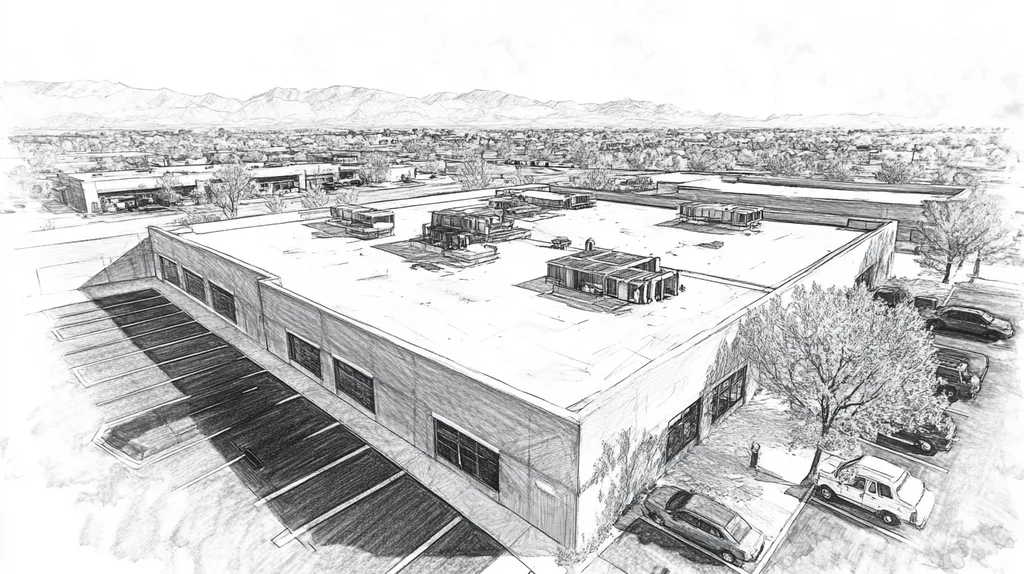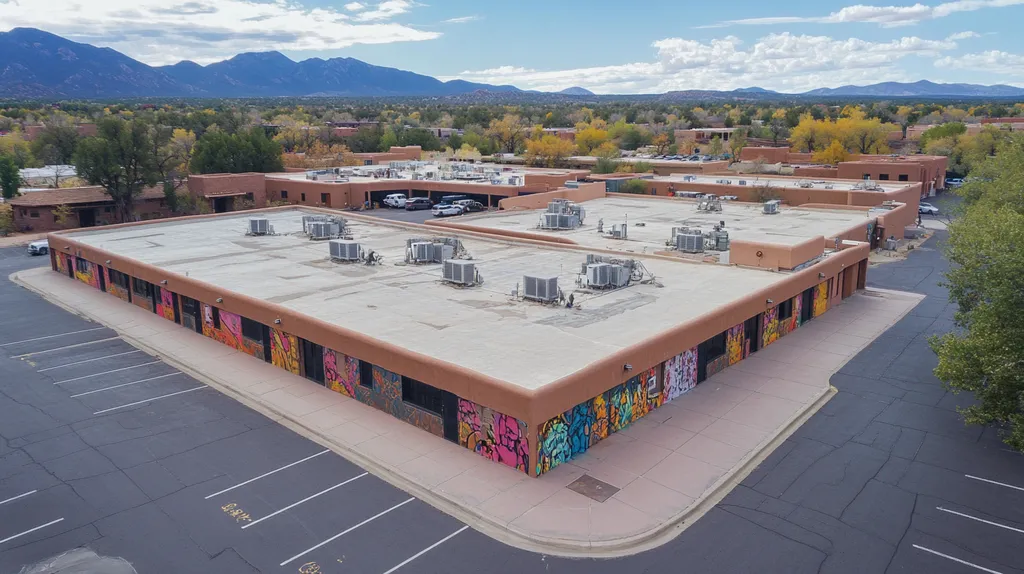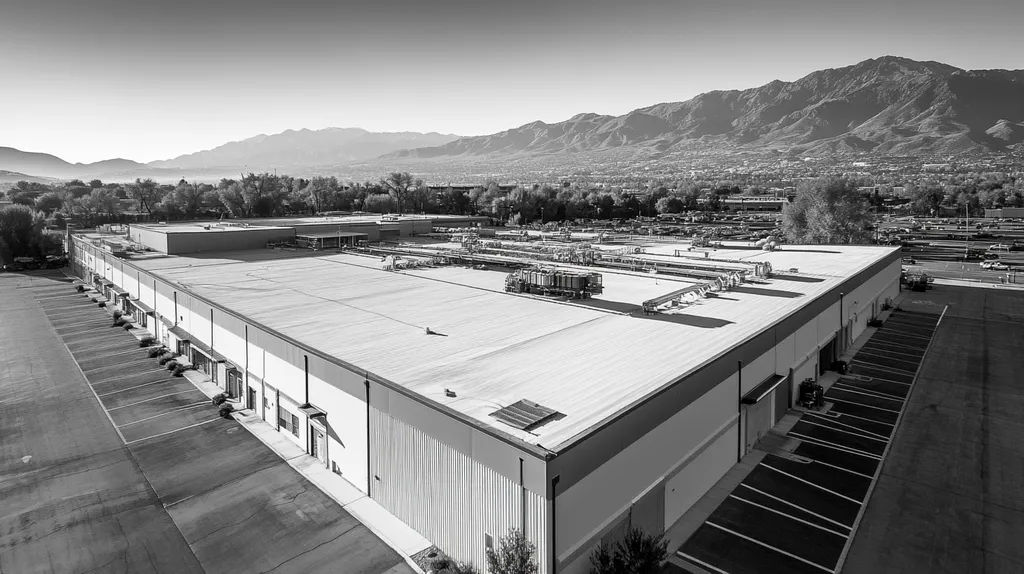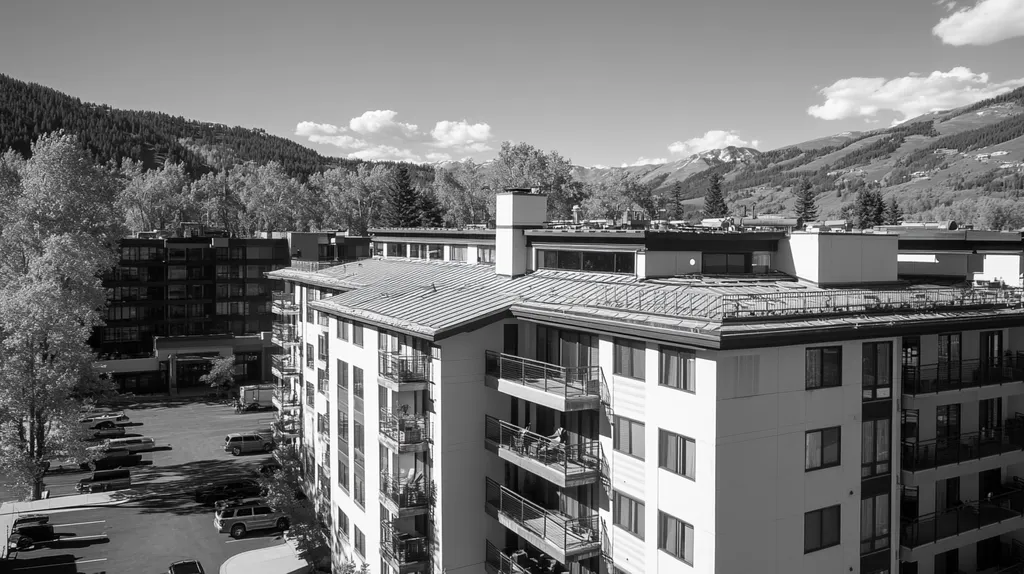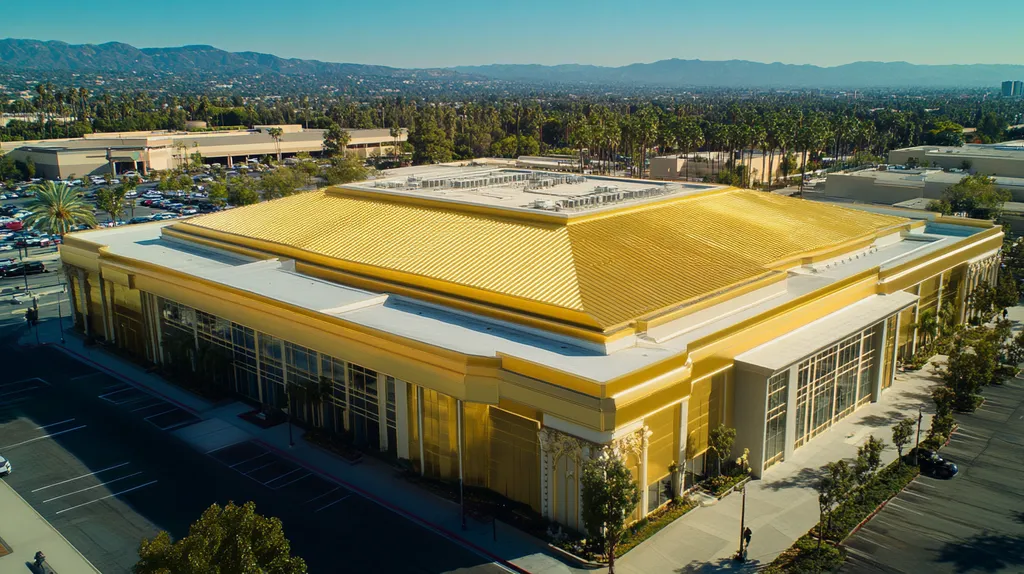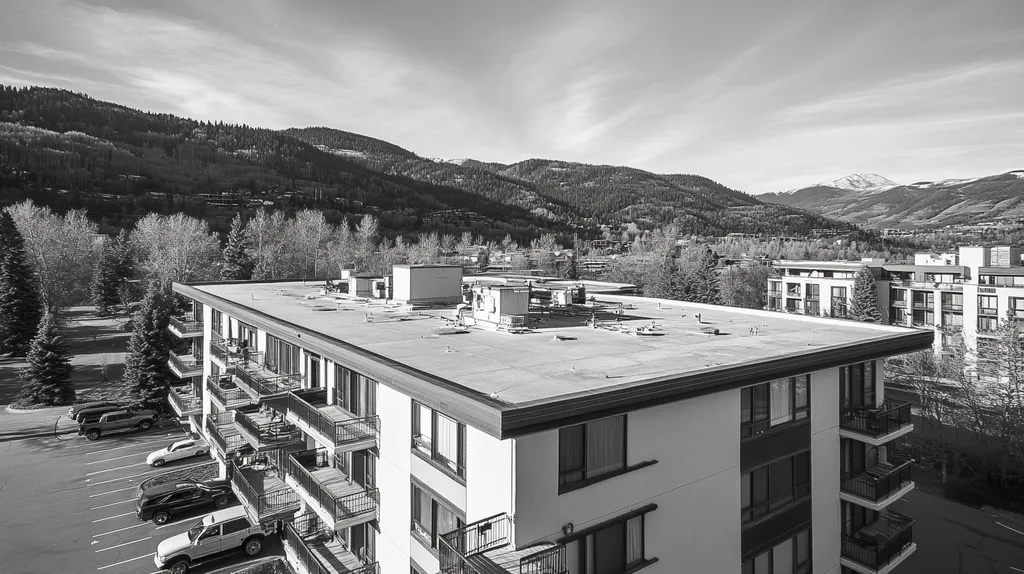Welcome to today’s Battle Royale featuring two roofing heavyweights: “Reflective Roof Coatings” in the east corner versus “Cool Roof Systems” in the west!
Tonight’s showdown pits these contenders against each other across six punishing rounds designed to test every aspect of their performance for Industrial Roof Savings.
At stake? Millions in potential costs, decades of building protection, and the critical performance demands of modern commercial and industrial facilities.
Our professional judging panel will evaluate each round on technical merit, real-world performance, and value delivery. After all six rounds, we’ll declare our ultimate champion.
Ladies and gentlemen, facility managers and building owners… it’s time to rumble!
ROUND 1: INITIAL COSTS & INSTALLATION
In today’s challenging economic climate, industrial facility managers face mounting pressure to reduce operational costs while maintaining building integrity. The choice between reflective roof coatings and cool roof systems represents a critical decision point that impacts both immediate budgets and long-term facility performance. Making the wrong choice can lead to unnecessary expenses and missed energy-saving opportunities that compound over time.
Material Expenses
Material costs form the foundation of any roofing project’s budget. Reflective roof coatings typically range from $0.75 to $1.50 per square foot, making them an attractive option for budget-conscious facility managers.
By reducing the roof’s temperature, reflective coatings minimize thermal expansion and contraction, which are common causes of roof degradation. This protective quality can lead to savings of up to 40% in hot climates. (source: Energy is Cool)
Cool roof systems, while offering superior performance in some areas, generally cost more than double the price of coatings, often exceeding $3.00 per square foot for materials alone. This significant price difference makes them a more substantial initial investment.
Given the considerable cost differential, reflective roof coatings hold a clear ADVANTAGE in material expenses.
Installation Complexity
Installation complexity directly affects labor costs and project risk. Reflective coatings can typically be applied with standard equipment and require minimal surface preparation, streamlining the installation process.
Most coating applications can be completed by a smaller crew using basic spraying or rolling techniques. This simplicity reduces the chance of installation errors and minimizes labor costs.
Cool roof systems often require specialized equipment and more extensive preparation work. Installation typically involves multiple layers and components, demanding greater technical expertise and larger crews.
The straightforward nature of coating application gives reflective roof coatings an ADVANTAGE in installation complexity.
Project Timeline
Project duration significantly impacts facility operations and overall costs. Reflective coating projects typically complete in 2-4 days for average-sized industrial facilities, minimizing business disruption.
The quick-drying nature of modern coating materials allows for rapid project completion. Most facilities can resume normal operations within 24 hours of the final coat application.
Cool roof system installations generally require 5-10 days for comparable facilities. This extended timeline increases both direct costs and potential business disruption expenses.
The efficiency of coating applications gives reflective roof coatings another clear ADVANTAGE in project timeline considerations.
ROUND 1 WINNER: Reflective Roof Coatings
ROUND 2: DURABILITY & LIFESPAN
In today’s competitive industrial environment, facility managers face mounting pressure to maximize the longevity of their roofing investments while minimizing maintenance costs. The wrong choice between reflective coatings and cool roof systems can lead to premature failure, costly repairs, and disrupted operations.
Studies show that proper roofing choices can extend service life by 50% or more, making this decision critical for long-term facility planning. Understanding how these options perform over time is essential for making informed investments that deliver sustained value.
Material Resilience
Material resilience directly impacts maintenance requirements and replacement frequency. Reflective coatings create a seamless protective layer that shields underlying roofing materials from UV damage and thermal stress.
These coatings can self-heal minor cracks and maintain their reflective properties for 10-15 years with proper maintenance. Their flexibility allows them to accommodate normal building movement without compromising performance.
Cool roof systems typically incorporate multiple layers of specialized materials engineered for durability. While these systems can last 20+ years, their multi-layer construction makes repairs more complex when damage does occur.
The simplicity and self-healing properties of coatings give them an ADVANTAGE in material resilience.
Weather Resistance
Weather resistance determines how well roofing solutions maintain performance under harsh conditions. Reflective coatings create a waterproof barrier that resists rain, hail, and wind-driven debris.
However, these coatings can be more susceptible to damage from prolonged ponding water or extreme impact events. Regular inspections are crucial to identify and address potential vulnerabilities.
Cool roof systems generally offer superior resistance to severe weather events. Their robust construction and redundant water barriers provide excellent protection against the elements.
The enhanced weather protection capabilities give cool roof systems an ADVANTAGE in this category.
Long-Term Performance
Long-term performance affects total ownership costs and replacement cycles. Reflective coatings can be reapplied periodically to extend roof life without complete replacement.
This renewable protection allows facility managers to maintain high performance while deferring major capital expenses. The ability to refresh the coating system provides excellent value over time.
Cool roof systems maintain their performance longer without intervention but eventually require complete replacement. This creates higher long-term costs despite their durability.
The renewable nature of coating systems provides an ADVANTAGE in long-term performance value.
ROUND 2 WINNER: Reflective Roof Coatings
ROUND 3: PERFORMANCE FACTORS
In today’s era of rising energy costs and environmental mandates, industrial facility managers face unprecedented pressure to optimize their buildings’ performance. The roofing system plays a pivotal role in a facility’s energy consumption, comfort levels, and operating costs. With utility expenses often representing 30% of a building’s operating budget, choosing between reflective coatings and cool roof systems can have major financial implications.
Energy Efficiency
A building’s roof significantly impacts its overall energy consumption and utility costs. Surface temperatures on traditional dark roofs can soar up to 150°F during peak summer conditions, creating substantial cooling demands.
Reflective roof coatings create a highly effective thermal barrier by reflecting up to 85% of solar radiation. This dramatic reduction in heat absorption translates directly into lower cooling costs and reduced HVAC system strain.
Cool roof systems utilize specialized materials and multi-layer construction to achieve similar reflection rates. However, their performance can degrade more quickly as surface contamination accumulates between maintenance cycles.
The superior maintainability and consistent performance of coatings earns them the ADVANTAGE in energy efficiency.
Temperature Control
Maintaining stable interior temperatures is crucial for industrial processes, worker comfort, and equipment longevity. Even small temperature fluctuations can impact productivity and operating costs.
Reflective coatings provide excellent temperature regulation by minimizing thermal bridging and heat transfer through the roof assembly. Their seamless application eliminates hot spots and thermal inconsistencies.
Cool roof systems offer comparable temperature control benefits through their engineered layers. However, their seams and joints can create weak points for heat transfer over time.
The uniform coverage and elimination of thermal bridges gives reflective coatings the ADVANTAGE in temperature control.
UV Protection
Ultraviolet radiation poses a serious threat to roofing system longevity and performance. Prolonged UV exposure can degrade materials, leading to premature failure and reduced efficiency.
Reflective coatings incorporate specialized UV-resistant compounds that maintain their protective properties for years. Their renewable nature allows for periodic reapplication to maintain optimal UV protection.
Cool roof systems rely on their surface materials for UV protection, which can deteriorate over time. While initially effective, their UV resistance typically declines faster than quality coating systems.
The renewable UV protection capabilities give reflective coatings the ADVANTAGE in this category.
ROUND 3 WINNER: Reflective Roof Coatings
ROUND 4: MAINTENANCE REQUIREMENTS
As energy costs continue to climb and environmental regulations tighten, industrial facility managers face mounting pressure to maintain high-performing roofing systems. Poor maintenance choices can lead to premature system failure, increased energy costs, and expensive emergency repairs that disrupt operations.
Understanding the maintenance requirements of different roofing solutions has become critical for protecting both building assets and operational budgets. The wrong maintenance approach can negate potential savings and compromise long-term roof performance.
Routine Inspections
Regular roof inspections form the foundation of effective maintenance programs. Reflective coatings typically require only bi-annual professional inspections to maintain optimal performance.
These inspections focus primarily on surface cleanliness and coating integrity. Simple visual assessments can identify most potential issues before they develop into serious problems.
Cool roof systems demand quarterly professional inspections due to their more complex construction. Multiple layers and components require thorough examination to ensure system integrity.
The reduced inspection frequency gives reflective coatings an ADVANTAGE in routine maintenance requirements.
Cleaning Requirements
Surface cleanliness directly impacts energy-saving performance. Reflective coatings can typically be maintained with simple pressure washing once or twice per year.
The smooth, seamless surface of coatings prevents dirt and debris accumulation. Most contamination washes away naturally with rainfall, reducing cleaning frequency.
Cool roof systems often trap debris between components and at seams. This requires more frequent cleaning and specialized techniques to prevent damage to system components.
The simplified cleaning needs give reflective coatings an ADVANTAGE in maintenance efforts.
Repair Procedures
Maintenance costs over time significantly impact total ownership expenses. Reflective coatings can be spot-repaired quickly with minimal material and labor costs.
The single-layer construction allows for easy identification and repair of damaged areas. Most repairs can be completed in hours without specialized equipment.
Cool roof systems require more complex repair procedures due to their multi-layer construction. Repairs often involve multiple components and specialized materials.
The straightforward repair process gives reflective coatings an ADVANTAGE in maintenance efficiency.
ROUND 4 WINNER: Reflective Roof Coatings
ROUND 5: SUSTAINABILITY CREDENTIALS
As businesses face mounting pressure to reduce their environmental impact and meet stringent ESG requirements, roofing choices have become a critical sustainability decision point. Industrial roofs cover vast surface areas that can either contribute to urban heat islands or help combat climate change through smart material choices.
With commercial buildings accounting for nearly 35% of U.S. electricity consumption, facility managers must carefully evaluate how roofing decisions impact their organization’s sustainability goals and bottom line. The wrong choice can lock facilities into decades of unnecessary energy waste.
Environmental Impact
Roofing materials significantly influence a facility’s environmental footprint through their manufacturing process, installation requirements, and operational performance. Reflective roof coatings require minimal raw materials and can often be applied over existing surfaces, reducing landfill waste.
These coatings work by reflecting sunlight and emitting absorbed heat, preventing it from being transferred into the building. Their high thermal emittance releases absorbed heat back into the atmosphere rather than the building interior. (source: Energy is Cool)
Cool roof systems typically require more extensive material production and often necessitate complete removal of existing roofing, generating significant construction waste. While they achieve similar reflective properties, their manufacturing process carries a higher carbon footprint.
The minimal waste generation and simpler manufacturing process gives reflective coatings the ADVANTAGE in environmental impact.
Material Sustainability
The sustainability of roofing materials extends beyond their immediate environmental impact to include their long-term performance and recyclability. Reflective coatings can be reapplied multiple times without removing previous layers, creating a renewable protection system.
When coating systems eventually reach end-of-life, they typically require minimal separation from substrate materials for disposal. This simplifies recycling efforts and reduces the environmental burden of replacement.
Cool roof systems often incorporate multiple material types that can be difficult to separate for recycling. Their complex construction can make sustainable disposal more challenging and energy-intensive.
The renewable nature and simpler recycling profile gives reflective coatings the ADVANTAGE in material sustainability.
Energy Conservation
Energy conservation represents one of the most significant sustainability impacts of roofing choices. Reflective coatings create a highly effective thermal barrier that dramatically reduces cooling energy requirements during peak demand periods.
By maintaining their reflective properties with simple maintenance, these coatings deliver consistent energy savings throughout their service life. Their ability to be refreshed ensures optimal performance can be maintained indefinitely.
Cool roof systems provide similar initial energy benefits but may experience more performance degradation over time. Their multi-layer construction can develop thermal inefficiencies as components age.
The consistent long-term energy performance gives reflective coatings the ADVANTAGE in energy conservation.
ROUND 5 WINNER: Reflective Roof Coatings
ROUND 6: SPECIALIZED APPLICATIONS
Industrial facility managers today face unprecedented challenges in adapting their roofing systems to meet specialized operational requirements while maximizing energy savings. With industrial electricity costs rising 12% annually in many regions, the stakes for choosing the right roofing solution have never been higher.
From temperature-sensitive manufacturing processes to strict regulatory compliance requirements, specialized applications demand roofing solutions that deliver consistent performance under unique conditions. Making the wrong choice can lead to operational disruptions and missed efficiency opportunities that compound over time.
Process-Critical Environments
Manufacturing and processing facilities require precise temperature control to maintain product quality and operational efficiency. Reflective roof coatings create uniform thermal barriers that help stabilize interior temperatures, critical for sensitive industrial processes.
These coatings can be customized with additional properties like chemical resistance or antimicrobial protection to address specific facility requirements. Their seamless application eliminates potential weak points that could compromise controlled environments.
Cool roof systems offer good general temperature control but lack the customization options available with coatings. Their standardized construction may not adequately address unique process requirements or specialized environmental controls.
The superior customization capabilities give reflective coatings the ADVANTAGE in process-critical environments.
Regulatory Compliance
Many industrial facilities must meet strict regulatory requirements for temperature control, energy efficiency, and environmental impact. Reflective coatings can be formulated to meet specific compliance standards while delivering documented energy savings.
Their renewable nature allows facilities to maintain compliance through periodic recoating rather than complete system replacement. This flexibility helps organizations adapt to evolving regulations without major capital investments.
Cool roof systems provide good baseline performance but offer less flexibility in meeting specialized compliance requirements. Their fixed construction makes it harder to adapt to changing standards without significant modifications.
The adaptable compliance capabilities give reflective coatings the ADVANTAGE in regulatory environments.
High-Security Applications
Facilities handling sensitive materials or processes require roofing solutions that maintain security integrity. Reflective coatings create seamless barriers that eliminate potential security vulnerabilities from joints or penetrations.
These coatings can incorporate specialized security features like tamper-evident properties or restricted-access formulations. Their monolithic application prevents unauthorized access through the roof assembly.
Cool roof systems rely on mechanical connections and multiple components that could create security vulnerabilities. Their seams and joints require additional monitoring to maintain facility security.
The enhanced security features give reflective coatings the ADVANTAGE in high-security applications.
ROUND 6 WINNER: Reflective Roof Coatings
AND THE WINNER IS…
After six grueling rounds of technical analysis, we have a decisive victory! With an unprecedented clean sweep across all categories, Reflective Roof Coatings emerges as our undisputed Industrial Roof Savings Champion!
This dominant performance was built on superior cost-effectiveness, remarkable durability, consistent energy efficiency, and unmatched maintenance simplicity. Round after round, reflective coatings demonstrated why they’re revolutionizing industrial roofing.
Yet Cool Roof Systems remain a formidable competitor, particularly for facilities requiring maximum weather resistance or buildings in extreme climate zones where multi-layer protection delivers crucial redundancy.
Important Notice: While this analysis highlights general performance characteristics, every facility faces unique challenges. Local climate conditions, building specifications, and operational requirements can significantly impact roofing system performance. Property owners should always consult qualified roofing professionals who can evaluate their specific situation and recommend appropriate solutions.
Remember, facility managers: In the high-stakes arena of industrial roofing, victory doesn’t just come from picking the winner – it comes from matching your building’s specific requirements to the right roofing solution. Now get out there and make your roof work harder for your bottom line!
FREQUENTLY ASKED QUESTIONS
Q. What are the initial costs of a commercial roof system?
A. The initial costs vary significantly between reflective coatings and cool roofs. Reflective coatings generally range from $0.75 to $1.50 per square foot, making them budget-friendly. In contrast, cool roof systems often exceed $3.00 per square foot, representing a higher investment for facility managers.
Q. How does durability affect industrial roof choices?
A. Durability is crucial for minimizing maintenance and replacement costs. Reflective coatings can last 10-15 years with proper maintenance, effectively shielding against UV damage. Cool roof systems may last over 20 years but involve more complex repairs, making them potentially less durable in practical terms.
Q. What role does energy efficiency play in commercial roofs?
A. Energy efficiency dramatically influences operational costs and comfort levels. Reflective coatings can reflect up to 85% of solar radiation, lowering cooling needs and HVAC strain. While cool roofs also provide similar benefits, they may degrade faster without consistent maintenance, impacting long-term savings.
Q. How often should I inspect my industrial roof?
A. Routine inspections are essential for maintaining roof performance. Reflective coatings typically require bi-annual inspections, focusing on surface condition. Cool roof systems need quarterly checks due to their complexity, making reflective coatings easier to maintain in this regard.
Q. Are reflective roof coatings sustainable options for commercial roofs?
A. Yes, they are a sustainable choice. Reflective coatings use fewer materials and can be applied over existing roofs, reducing waste. They also help conserve energy by minimizing cooling demands, supporting an organization’s sustainability objectives while providing financial benefits over time.
Q. What are the maintenance requirements for a commercial roof?
A. Maintenance involves inspections, cleaning, and repairs. Reflective coatings require bi-annual inspections and minimal cleaning, often needing just pressure washing. Cool roofs demand more frequent inspections and complex cleaning processes, leading to higher overall maintenance costs and efforts.
Q. Can reflective coatings be customized for special applications?
A. Absolutely! Reflective coatings can be tailored for specific facilities, such as adding chemical resistance or antimicrobial properties. This adaptability ensures they meet unique operational and environmental requirements, unlike cool roof systems, which are less customizable in their application.

